
Pigs aren't small so, by extension, neither is the apparatus you need to cook a whole one outside. A propane-powered pig cooker needs to be big, heat-resistant and sturdy enough to handle a pig weighing anywhere from 60 to 120 pounds. Whatever material you use as a cooking chamber, be it a steel drum or even treated wood, it needs to be heat resistant to at least 240 degrees Fahrenheit because pork needs to reach an internal temperature of at least 160 degrees Fahrenheit before it is safe to eat.
Building the Cooking Chamber
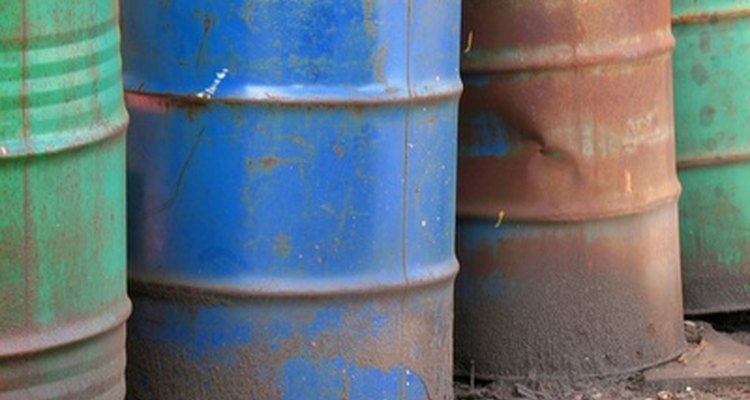
Choose a cooking chamber based on how large a pig you plan to cook. It's best to choose a bigger drum, rather than a smaller one, to allow room for larger projects. The Smoker King, for example, built a pig smoker out of a 250 gallon drum.
Attach sawhorse leg supports, using a screwdriver or power-screwdriver, positioning the drum horizontally. Choose legs, screws and bolts that are heat resistant and strong enough to support the weight of your drum, the spit and the pig. It might be necessary to support the legs with boards or steel rods.
Saw a square hole into the drum, saving the piece of the drum you removed. Ensure that the hole, which will act as the door, is big enough to accommodate the pig. Reattach the saved piece of the drum using hinges and a latch. This apparatus allows you to put a pig in the cooker and check on it while it's cooking. After creating the door, consider sawing vents in the top of your cooking drum.
Drill two holes at each end of the drum. The holes should be big enough to house the steel rod that will act as the barbecue spit. The rod should be long enough to protrude from both ends of the cooking drum. Once the spit is in place, reinforce it with brackets and other supports, but do not fix the spit in place. In the future, you'll need to detach it from one end of the cooker to put the pig in the cooker.
Screw the crank handle to the spit outside the cooker. The handle should be affixed tightly to the spit and allow you to turn the spit easily while roasting a pig. To avoid interference, you should position the crank on the end of the cooker opposite the propane tank.
Installing the Propane, Cooking the Pig

Attach a propane regulator to the cooking drum. Drill holes in the bottom of the cooking drum, run the hoses out of the drum, and position the regulator inside the cooking drum. Secure it with screws and bolts.
Connect the hoses to the propane tank. Use at least 4 feet of hose to conveniently position the tank. After connecting the hose, turn on the tank and test the flow of propane. There should be no leaks outside the drum, and only propane flowing into the drum from the regulator. The pig cooker is complete.
Slide one end of the spit out of the cooking drum, then position the pig securely on it. Depending on the size of your pig, you might need help securing the pig. Once it's on the spit, reattach the spit to the cooking drum.
Light the propane regulator on a low setting. Using a lower flow of propane to light the regulator reduces the risk of accidentally burning yourself. Safely position the propane tank away from the cooker and turn up the heat.
Rotate the pig often, cooking it evenly until its internal temperature is at least 160 degrees Fahrenheit. Depending on the size of your cooking drum and the inside temperature, Dizzy Pig BBQ estimates that cooking a pig takes between 1 1/4 to 2 hours per pound to cook. Be safe: once you've turned up the heat, only touch the cooker and the pig with proper heat-resistant gloves.
Related Articles

How to Cook a Goose on the Grill

How to Cook With the Sunbeam Rotisserie

How to Make a Cheap Smoker
How to Cook With a Reverse Flow Smoker

How to Cook Brats in a Pressure Cooker

How to Rotisserie Cook Without a ...

How to Cook Lechon

How to Cook a Beef Roast Over an Open ...

Cooking Times for Smoking Meat in an ...
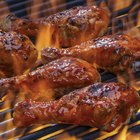
How to Cook Chicken in a Crockpot & ...

How to Cook in a Farberware Rotisserie
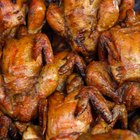
Rotisserie Cooking Times
How do I Cook a Prime Rib on an Open ...

How to Cook Prime Rib Using an Oven ...

How to Cook With a Gas Fireplace

How to Smoke a Ham Shank on a Charcoal ...
How to Cook in Tabletop Convection Ovens
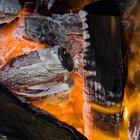
How to Smoke a Brisket With an Offset ...
How to Cook With an Hibachi Barbecue
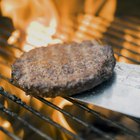
How to Convert a Brinkman Smoker From ...
References
Writer Bio
Ben Taylor has been writing since 2005 and has had work published by WEKU-FM and West Virginia Public Broadcasting both on air and online. Taylor holds a Master of Arts in English from Eastern Kentucky University and currently teaches composition and ESL there.
Photo Credits
pig baby image by Maria Bell from Fotolia.com